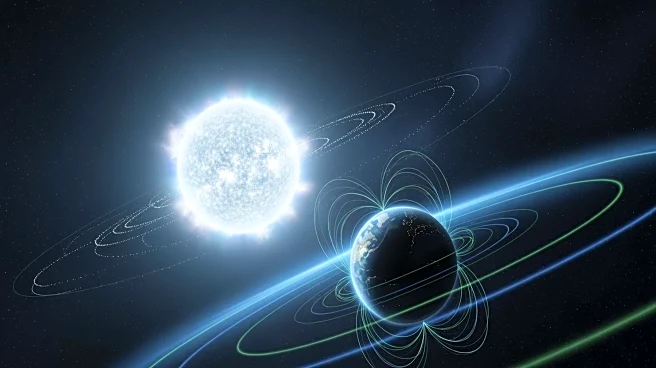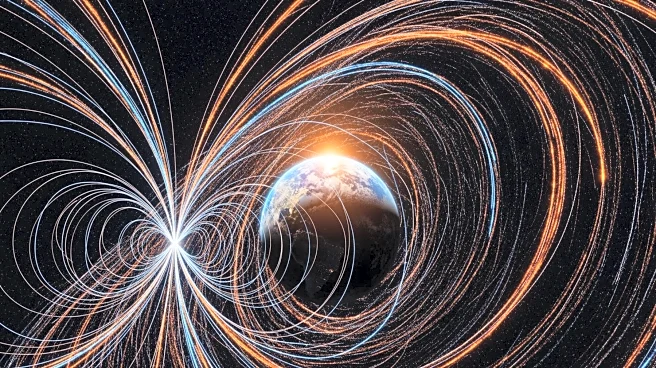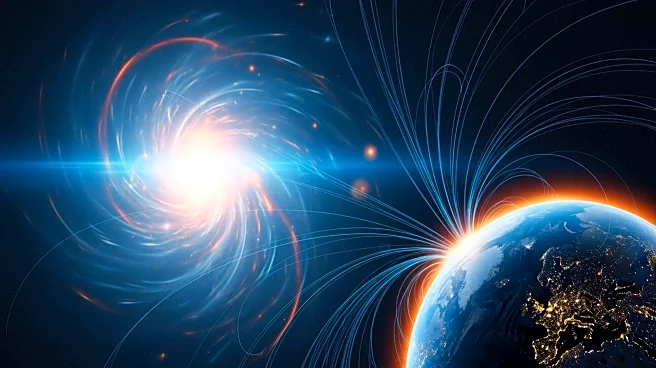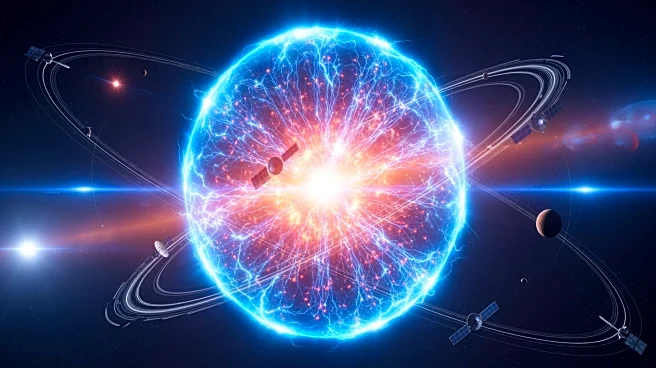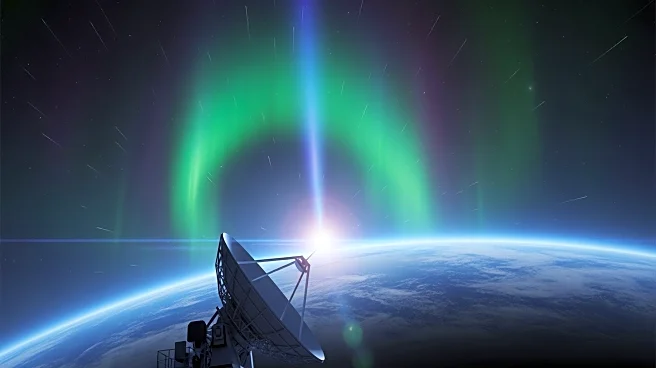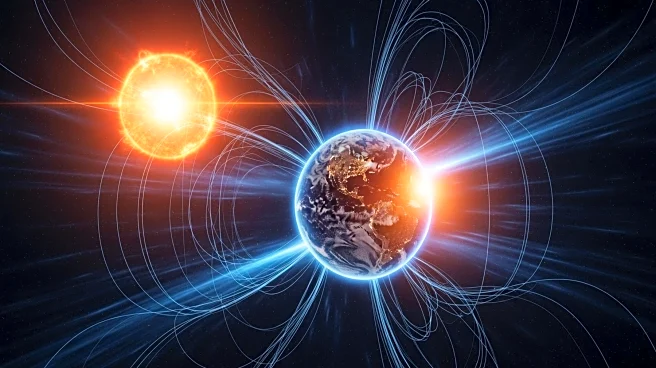What's Happening?
On November 20, a stealth solar storm reached Earth, catching scientists off guard due to its lack of visible warning signs. Unlike typical coronal mass ejections (CMEs), which are easily detected through
solar observations, stealth CMEs are faint and slow-moving, making them difficult to track. This particular event did not trigger a geomagnetic storm but contributed to auroras visible in some mid-latitude regions. NOAA experts noticed unusual changes in solar wind patterns, indicating the presence of a stealth CME. The solar wind speed increased to 400-500 km/s, higher than normal, and a sudden increase in the magnetic field was recorded. Space weather expert Tamitha Skov noted that stealth solar storms are becoming active again, emphasizing their unpredictability and potential impact on Earth's space environment.
Why It's Important?
The occurrence of stealth solar storms highlights the unpredictable nature of solar activity and its potential impact on Earth's space environment. These events can disrupt satellite operations, communication systems, and power grids, posing risks to technological infrastructure. The November 20 storm serves as a reminder of the need for improved detection and monitoring systems to anticipate such events. As the Sun approaches the waning phase of its 11-year solar cycle, the likelihood of unusual solar activity increases, necessitating heightened awareness and preparedness among scientists and stakeholders. Understanding stealth CMEs is crucial for mitigating their effects and ensuring the resilience of critical systems.
What's Next?
Scientists and space weather experts will continue to monitor solar activity closely, focusing on improving detection methods for stealth CMEs. Research efforts may be directed towards developing advanced technologies and models to predict these elusive solar events more accurately. Collaboration between international space agencies and research institutions could enhance data sharing and analysis, leading to better preparedness for future solar storms. Stakeholders in the telecommunications and energy sectors may need to implement contingency plans to safeguard infrastructure against potential disruptions caused by stealth solar storms.
Beyond the Headlines
The stealth solar storm phenomenon underscores the complexity of solar dynamics and the challenges faced by scientists in understanding and predicting space weather. It raises questions about the limitations of current observational technologies and the need for innovation in space weather forecasting. The event also highlights the interconnectedness of Earth's systems, where solar activity can have cascading effects on technological and environmental processes. As research progresses, ethical considerations regarding the allocation of resources for space weather studies and the dissemination of information to the public may arise.
